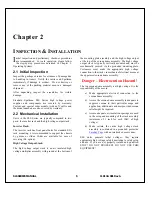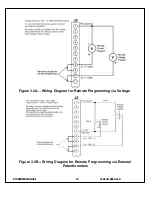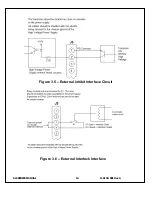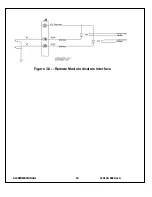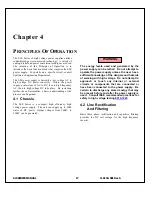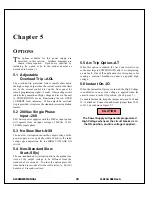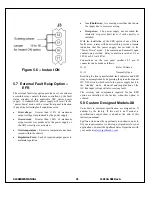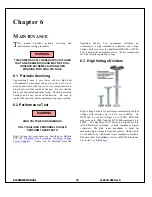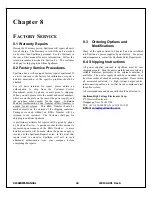
SLS SERIES MANUAL
18
118132-001 RevA
Circuit protection is provided by a front panel fast acting
magnetic trip type circuit breaker. The line input is
connected directly to the line side of the circuit breaker
whereas the load side is connected to the
CONTROL/POWER PWB. The load side of the breaker
is also connected to a step-down type line transformer
which provides voltages for housekeeping and control
circuit power.
LINE VOLTAGE IS PRESENT WHENEVER THE
POWER SUPPLY IS CONNECTED TO EXTERNAL
LINE VOLTAGES. BE SURE TO DISCONNECT
THE LINE CORD BEFORE OPENING THE UNIT.
ALLOW 5 MINUTES FOR INTERNAL
CAPACITANCE TO DISCHARGE BEFORE
REMOVING ANY COVER.
When the circuit breaker is ON, voltage is applied to an
isolated three phase bridge rectifier, which contains the
diodes used for line voltage rectification. The output of
this bridge rectifier is connected to a capacitive filter to
reduce the line related ripple components. The filter
capacitors are initially charged through a resistive inrush
limiter to prevent nuisance tripping of the circuit breaker
during initial turn on.
Approximately 3 seconds after the circuit breaker is
closed, a relay is energized to short the resistive inrush
limiter. This ±150Vdc rail voltage is supplied to the high
frequency inverter.
The DC rails are connected to the high frequency rail
capacitors. These capacitors are high frequency, low loss
type, which provides the energy storage for the high
frequency inverter.
4.3 Inverter
The inverter is a series resonant, series/parallel loaded
topology. A proprietary control scheme is used for
regulating the power generated from the resonant IGBT
inverter. These power devices provide high frequency
switching to control the resonant current flow. The
typical resonant operating period is approximately 10
microseconds. The gate control for the IGBT’s is
provided by the circuitry located on the
CONTROL/POWER PWB. The CONTROL/POWER
PWB also provides circuitry for sensing simultaneous
conduction and overcurrent conditions in the inverter.
4.4 High Voltage Transformer
The output of the Inverter is connected to the primary of
the step up High Voltage Transformer. The High Voltage
Transformer is located in the “stack” assembly beneath
the upper grounded baseplate. The inverter output is
typically an AC high frequency signal about 300 volts in
magnitude. Due to the high frequency, high current
flowing in this cable it is not recommended to try to
modify and/or lengthen the inverter drive cable that
connects the inverter rack and the high voltage stack.
4.5 High Voltage Stack Assembly
The High Voltage Stack Assembly will vary depending
upon the specific model of SLS ordered. The stack is
comprised of an assembly of encapsulated interlocking
high voltage multiplier “wafers”, an encapsulated filter
assembly and an encapsulated voltage feedback divider.
Each encapsulated high voltage multiplier wafer is rated
for 20kV, so an SL160P2000 would use eight (8)
interlocking multiplier wafers to generate the required
output voltage.
The output filter assembly attenuates ripple by virtue of
an R-C type filter. The voltage feedback divider provides
a representative sample of the actual high voltage output
for regulation and monitoring purposes. Current feedback
for regulation and monitoring is provided by a current
sense resistor connected at the low voltage end of the
multiplier stack assembly.
4.6 Control/Power PWB
The majority of control circuits for power supply
operation are located on the CONTROL/POWER PWB.
+15Vdc, -15Vdc, and +10Vdc is generated on the
CONTROL/POWER PWB. High Voltage On/Off control
is accomplished by relay K3, and its associated circuitry.
Interlock control is provided by relay K4.
Voltage feedback from the high voltage divider is sent to
the control board via a mass terminated ribbon cable.
Gain adjustment is provided on the HV FDBK PWB.
The KV feedback signal is sent to the front panel DVM
and to the REAR PANEL interface 25 pin D connecter
for remote monitoring. Relay K2 provides switching
between feedback and program signal for the front panel
DVM’s. This allows the user to preset the desired output
before energizing high voltage.
WARNING


